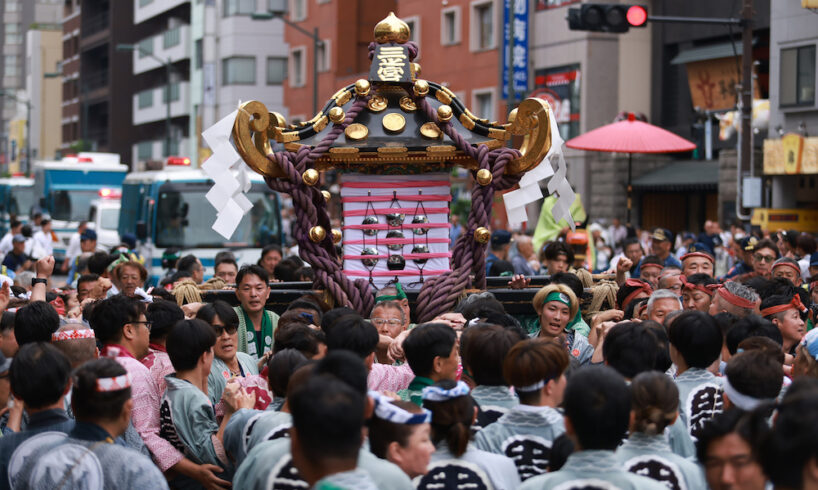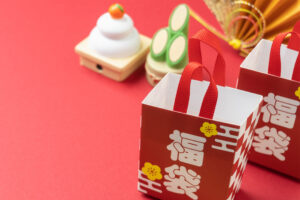
In Japan, the simple act of removing your shoes at the genkan (entryway) reveals more than just etiquette; it reflects a deep cultural logic of space and purity. Shoes, marked by the impurities of the outside world, are exchanged for indoor slippers to protect the sanctity of the home.
Beneath this everyday gesture lies the layered meaning of uchi (inside) and soto (outside), two fundamental concepts that shape how people relate not only to others but also to the spaces they inhabit.
Credit: miya227
It’s tempting to see this as a black-and-white rule: inside is pure and safe, while outside is impure and dangerous. Shinto, Japan’s indigenous belief system, reinforces this association through concepts like kegare (ritual impurity)—mud, sickness or death come from the outside world and must be purified before entering homes or sacred spaces. Even language reflects this moral geography: uchi implies intimacy, while soto suggests distance or separation.
Yet these boundaries are far from fixed. They shift constantly with context, revealing how fluid the concepts of inside and outside truly are.
Uchi and Soto Are Fluid, Not Absolute
Uchi and soto are relational and shift with context. A room at home may feel formal when hosting important guests, but the same room becomes casual over a family dinner. Anthropologist Dorinne Kondo observed this fluidity in workplaces: someone can be uchi (an insider) during social drinks, then become soto (an outsider) the moment they return to their desk.
Credit: maroke
This flexibility explains why forest shrines or city festivals can feel like uchi within soto—sacred bubbles of belonging carved into the outside world. Boundaries in Japan shape behavior, but they don’t strictly determine where belonging, purity or connection can be found.
Shinto and the Logic of Purification
Shinto teaches that impurities naturally accumulate through the course of life. Death, illness and childbirth are all seen as kegare. This isn’t about sin or moral failure; it’s about harmony being disrupted. Washing, cleansing or renewing helps people recover from these intense moments and gently return harmony to their lives.
Anthropologist Mary Douglas famously described dirt as “matter out of place.” In other words, something is considered “dirty” not because of its inherent qualities, but because it exists where it doesn’t belong within a particular system or context. The concept of kegare mirrors this idea—impurity arises when something no longer fits within a given space.
You’ll notice temizuya, stone water basins, at the entrance of most Shinto shrines. Visitors rinse their hands and mouths before approaching the sacred space. This simple act mirrors the larger logic of uchi and soto: you leave behind kegare from daily life before stepping into the shrine’s protected realm.
Temizuya
Even non-religious Japanese often visit shrines for hatsumode (New Year’s first shrine visit), weddings or after life changes like starting a new job. It’s less about rigid faith and more about maintaining social and spiritual balance. Other seasonal festivals like Oshogatsu (New Year) involve house cleaning to remove the year’s spiritual residue.
Credit: PicturePartners
Ise, Mie, Japan – April 5, 2019 : Meoto Iwa Rocks and blue sea
Soto as Sanctuary
Interestingly, the outside world of soto is not just a source of impurity. In Japanese cosmology, it can also cleanse. Shinto’s reverence for kami (divine spirits) in rocks, trees and streams shows that stepping outside is stepping into sacredness. Standing under a waterfall (misogi), washing hands at a shrine basin or walking a forest path restores spiritual calm. Environmental historian Conrad Totman notes that forests and rivers in Japan aren’t just resources—they’re sacred, living actors that purify and sustain.
Even urban Japanese, surrounded by concrete, maintain this instinct. Visiting a shrine after a hard day, hiking to a waterfall or simply sitting in a quiet garden serves as a reset. Nature is the threshold where soto becomes uchi—a public space that feels deeply personal.
Forest Bathing (Shinrin-yoku)
Japan’s contemporary embrace of nature echoes ancient Shinto beliefs. Shinrin-yoku (forest bathing), introduced in the 1980s, was promoted as an antidote to the pressures of city life. Researchers at Chiba University found that just 40 minutes in a forest significantly lowers cortisol levels and blood pressure.
Unlike a hike for fitness, shinrin-yoku is about presence. You move slowly, breathe deeply and tune into the sound of wind through cedar trees. It reflects the same Shinto belief that nature is harmony. Even in a hypermodern city, visiting Meiji Shrine’s forested grounds is an act of quiet purification.
Read more: What is Forest Bathing in Japan?
Third Spaces—Blurring the Line Between Home and Public
Between the intimacy of uchi and the openness of soto lies a liminal realm known as daisan no ba—the “third place.” These spaces are neither strictly private like the home nor fully public like the street and offer a soft social buffer where people can exist without the heavy obligations of either realm.
Cafés, Bathhouses and Parks
Think of a cozy kissaten (café) or a neighborhood sento with regulars chatting quietly. These places allow a subtle loosening of social formality without abandoning it entirely. They carry a low-level sense of soto, you’re outside the home, but they’re intimate enough to invite warmth.
Even urban parks, from the landscaped gardens of Shinjuku Gyoen to the sprawling Yoyogi Park, serve as modern third spaces. They’re outdoors, yet designed to feel approachable and safe, with seasonal hanami picnics and casual gatherings that temporarily form micro-communities.
Hanami picnic
The Semi-Public Rules of Behavior
Third spaces mix public etiquette with personal comfort. In a sento, you follow shared rules of cleanliness but relax in a way you wouldn’t on a busy street. In a café, you’re courteous and quiet, but you can linger for hours.
Even nature itself can be a third space. Sitting under a shrine’s sacred tree or walking along a riverbank isn’t fully private or fully public. It’s a shared space designed for reflection without the rigid demands of social performance.
The Balance of Belonging
In Japanese life, uchi and soto aren’t rigid categories but shifting gradients. They guide behavior, rituals and even emotions. The home needs the outside to remain pure. The outside offers cleansing that the inside cannot provide. And in between, third spaces soften the boundaries.
From removing shoes at the entryway to standing under a waterfall, these practices reveal a worldview where purity, belonging and connection are always relational.
This article was published in our 2025 autumn print magazine. Read the magazine online or pick up a copy around Tokyo!
Read about Water Spirits in Japanese Folklore





